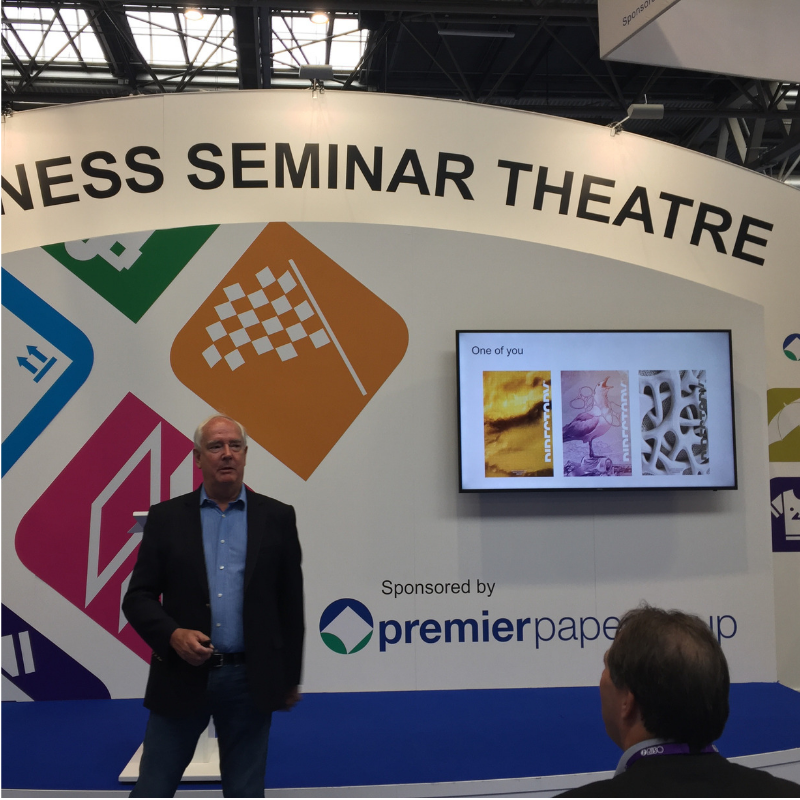At The Print Show on Thursday 20th September, I saw Patrick Collister’s ‘Building Windmills’ presentation – the title from the ancient Chinese proverb that goes: “When the wind of change blows, some people build walls, others build windmills.”
Patrick was creative director of Ogilvy & Mather which shows in the many ways he uses examples, images, quotations and reference points to highlight how many ways there are of challenging the norm and finding a new ideas.
He now works with many global companies to encourage creativity and to encourage us to apply this to print, he shared 7 steps from his Creative Toolbox:
- Have an idea
Think about what you are doing and stand for something. He said people associate print with authenticity and showed how some publications, like Private Eye, are seeing subscriptions increase.
- New combinations
Consider how print can be used in conjunction with something else to be more powerful. Patrick showed examples with digital, data, music, video and even how a magazine had incorporated a phone charger. He challenged us to think of new combinations that would work with print.
- Scenario Planning
Ask yourself what will happen in your business should specific scenarios happen. When video is the normal way to obtain information. When search is predominantly voice activated. When Brexit happens. And use the answers to come up with new ideas.
- Challenge Assumptions
Patrick showed that some of the world’s leading brands use print, including Facebook who have launched a magazine, Google who use print, and Net-a-porter who distribute their printed magazine to 64 countries.
- Parallel worlds
We can now cut out the ‘agent’ and go straight to customer. We should look for new formats and new places – people are using printed floor coverings because people on their phones are looking down.
- Do the opposite
Patrick stated that when it is important, it’s print. Brands will print or publish on good quality paper with high production values because they know the premium feel transfers to the luxury feel of their brand.
- Innovate
Develop ideas in existing markets. Packaging is now a real area of change with NFC chips connecting your product with your mobile and digital experience. Buying a product can now have additional dimensions.
Finally, Patrick talked about the 70/20/10 rule, used by Eric Schmidt at Google, who believes 70% of time should be spent on core business tasks, 20% on related projects and 10% on unrelated projects as he believes, “In the long run, a few of those unrelated 10% ideas will turn into core businesses that become part of the 70%. And that’s good for business and the bottom line.”
Print has a real value in our digital times and creativity is needed to continue to develop the ideas and the communication of those ideas to the creatives and marketers who will use them. Patrick’s 7 steps are a great way to inject creativity into your business thinking.
Patrick’s Crouching Tiger YouTube channel is here
More of Patrick’s examples are shown in detail in his magazine Directory which you can subscribe to here

